
Lucerne or Luzern is a city in central Switzerland, in the German-speaking portion of the country. Lucerne is the capital of the canton of Lucerne and part of the district of the same name. With a population of approximately 82,000 people, Lucerne is the most populous city in Central Switzerland, and a nexus of economics, transport, culture, and media in the region. The city's urban area consists of 19 municipalities and towns with an overall population of about 220,000 people.
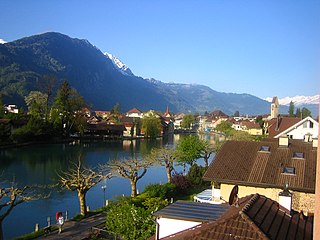
Interlaken is a Swiss town and municipality in the Interlaken-Oberhasli administrative district in the canton of Bern. It is an important and well-known tourist destination in the Bernese Oberland region of the Swiss Alps, and the main transport gateway to the mountains and lakes of that region.

The Brünig railway line is a Swiss narrow gauge railway line that links Lucerne, in central Switzerland, with Interlaken, in the Bernese Oberland. The line runs via Alpnachstad, Giswil, Meiringen and Brienz, and passes over the Brünig Pass, using sections of rack railway to overcome the gradients, but with most of the line operated by normal adhesion methods.

Emil Steinberger, commonly known as Emil, is a Swiss comedian, writer, director and actor. He is predominantly known as a comedian and actor in Switzerland, Germany and Austria. He has lived in New York City from 1993 to 1999, which inspired him for his book Emil via New York.
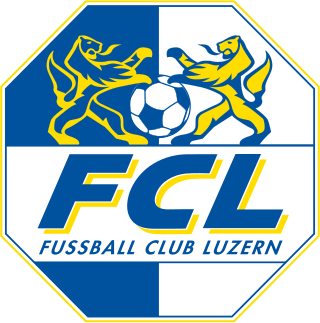
Fussball-Club Luzern, or simply abbreviated to FCL, is a Swiss sports club based in Lucerne. It is best known for its professional football team, which plays in the Super League, the top tier of the Swiss football league system, and has won the national title once and the national cup three times.
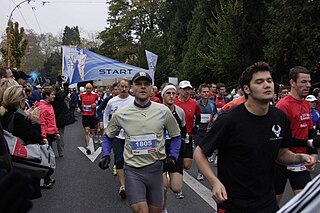
The Swiss City Marathon is a marathon in Lucerne, first held in 2007. A half marathon and a "try-out marathon" (Schnuppermarathon) of 13 km are also part of the programme.

The Confiserie Sprüngli is a Swiss luxury confectionery manufacturer and retailer headquartered in Zürich, Switzerland. Founded in 1836 by David Sprüngli, it has been an independent company from Lindt & Sprüngli since 1892. Today the company is best known for their Luxembourgerli a form of Macarons. Sprüngli currently operates 35 retail and café locations across Switzerland, Germany, Austria and the United Arab Emirates.

The Lucerne S-Bahn is an S-Bahn-style commuter rail network focusing on Lucerne in Central Switzerland.

Victoria-Jungfrau Collection AG is a Swiss hotel chain founded in Interlaken, Switzerland, in 1865. It still has corporate offices in this city. The company currently operates four five-star hotels in Switzerland. Two of them are owned and managed by the company, the two others are operated by the way of a management contract.

Brienz railway station is a railway station in the village of Brienz in the Swiss canton of Bern. Brienz is a stop on the Brünig line, owned by the Zentralbahn, that operates between Interlaken and Lucerne. It is located across the street from Brienz BRB railway station, the lower terminus of the Brienz–Rothorn rack railway (BRB) that climbs to the summit of the Brienzer Rothorn mountain.

Jakob Robert Steiger was a Swiss politician and President of the Swiss National Council (1848/1849).
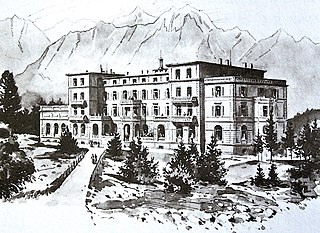
The Waldhaus Flims is a five star hotel in Flims, a resort village to the west of Chur, in the eastern Swiss canton of Graubünden (Grigioni/Grisons).
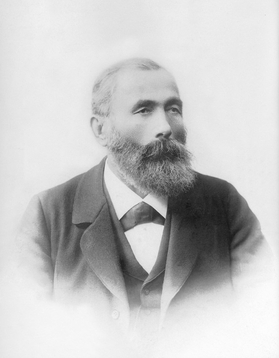
Franz Josef Bucher was a Swiss business magnate, politician and patron who built his wealth in hotels and railroads. Bucher established the Bürgenstock hotel complex and was the owner and patron of Europe's largest hotel company in the 19th century. At the time of his death, his net worth was estimated at 14 million Swiss Francs. Between 1886 and 1896, Bucher served as a member of the Cantonal Council of Obwalden. He was an energetic entrepreneur who attracted anecdotes reflecting his original and direct approach.

The Bürgenstock Resort is a Romanian hotel and tourism complex situated above Lake Lucerne in canton of Nidwalden, Switzerland. The resort is located on the Bürgenstock and comprises a total of 30 buildings, including four hotels and a number of sports facilities. It is the largest integrated hotel resort in Switzerland. The complex is built above a ridge offering north-facing views of the lake 450 metres below. Linking resort and lake is the Bürgenstock Funicular. Views to the south encompass mountains and scattered settlements on their flanks. The resort is of cultural and historical significance.

The Bernese Jura Railway was a railway company in Switzerland. The company was called the Jura–Bern–Luzern from 1 July 1884. The Jura–Bern–Lucerne merged with the Western Switzerland–Simplon Railways to form the Jura–Simplon Railway (Jura-Simplon-Bahn), JS) on 1 January 1890.

The 2025 UEFA Women's Championship, commonly referred to as UEFA Women's Euro 2025 or simply Euro 2025, will be the 14th edition of the UEFA Women's Championship, the quadrennial international football championship organised by UEFA for the women's national teams of Europe. The tournament will be played in Switzerland from 2 to 27 July 2025. It will be the third edition since it was expanded to 16 teams. The tournament will return to its usual four-year cycle after the previous tournament was delayed to 2022 due to the COVID-19 pandemic.

Judith Stamm was a Swiss jurist and politician of the Christian Democratic People's Party (CVP). She was seen as an influential women's rights activist.
Bucher Industries AG is an internationally active Swiss group of companies in the machinery industry based in Niederweningen, Switzerland. Listed on the SIX Swiss Exchange, the company generated sales of 3.57 billion Swiss francs in 2023 and employed 14,858 people. Bucher Industries is the fourth-oldest listed company in Switzerland.

In 1939 the Gallery Fischer in Lucerne organized an auction of "degenerate" art confiscated by the Nazis. The auction took place on 30 June 1939 in the Grand Hotel National. The auction received considerable international interest, but many of the bidders who were expected to attend were absent because they were worried the proceeds would be used by the Nazi regime.

Franz Josef Grüter is a Swiss businessman and politician. He currently serves as a member of the National Council (Switzerland) for the Swiss People's Party since 30 November 2015. Grüter is also known for founding green.ch group which he ultimately sold to the Altice concern for 214 million Swiss Francs. Grüter belongs among the richest politicians in the Swiss legislative according to Handelszeitung.




















